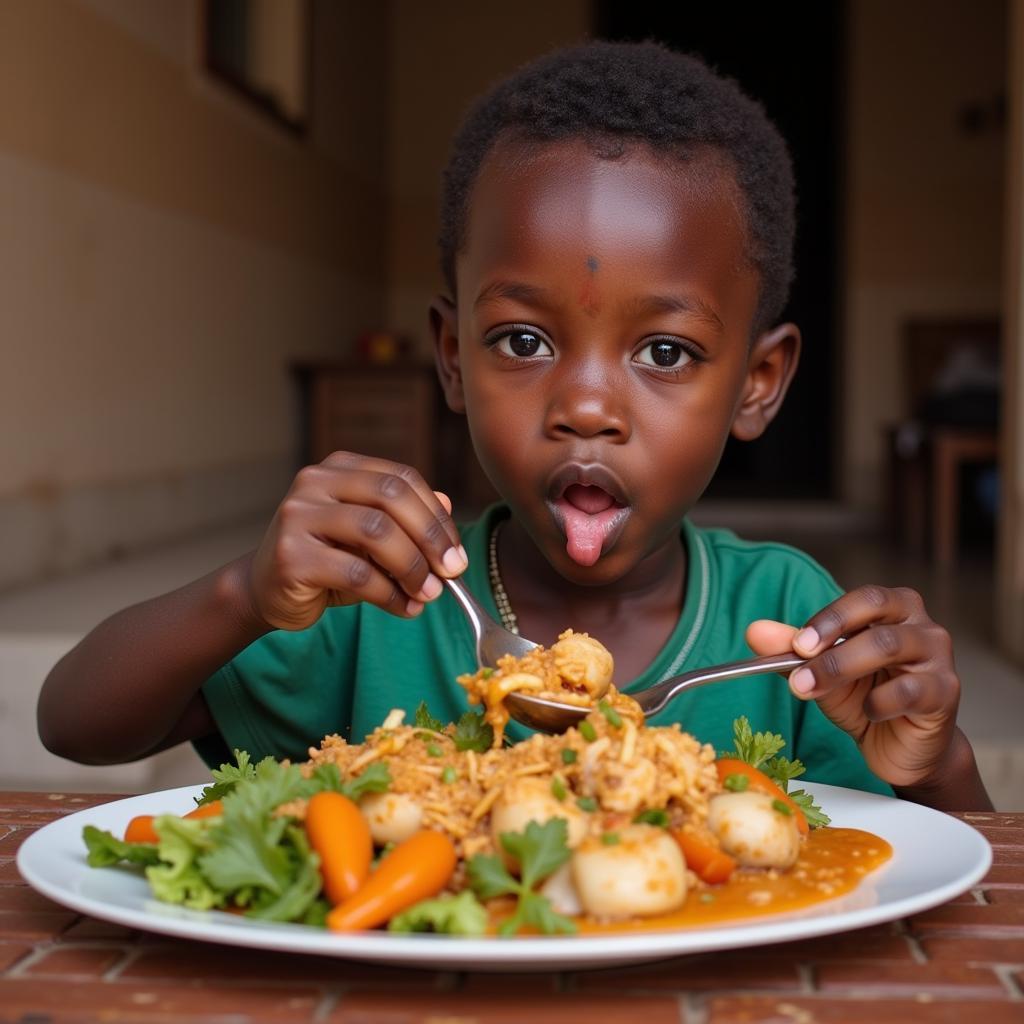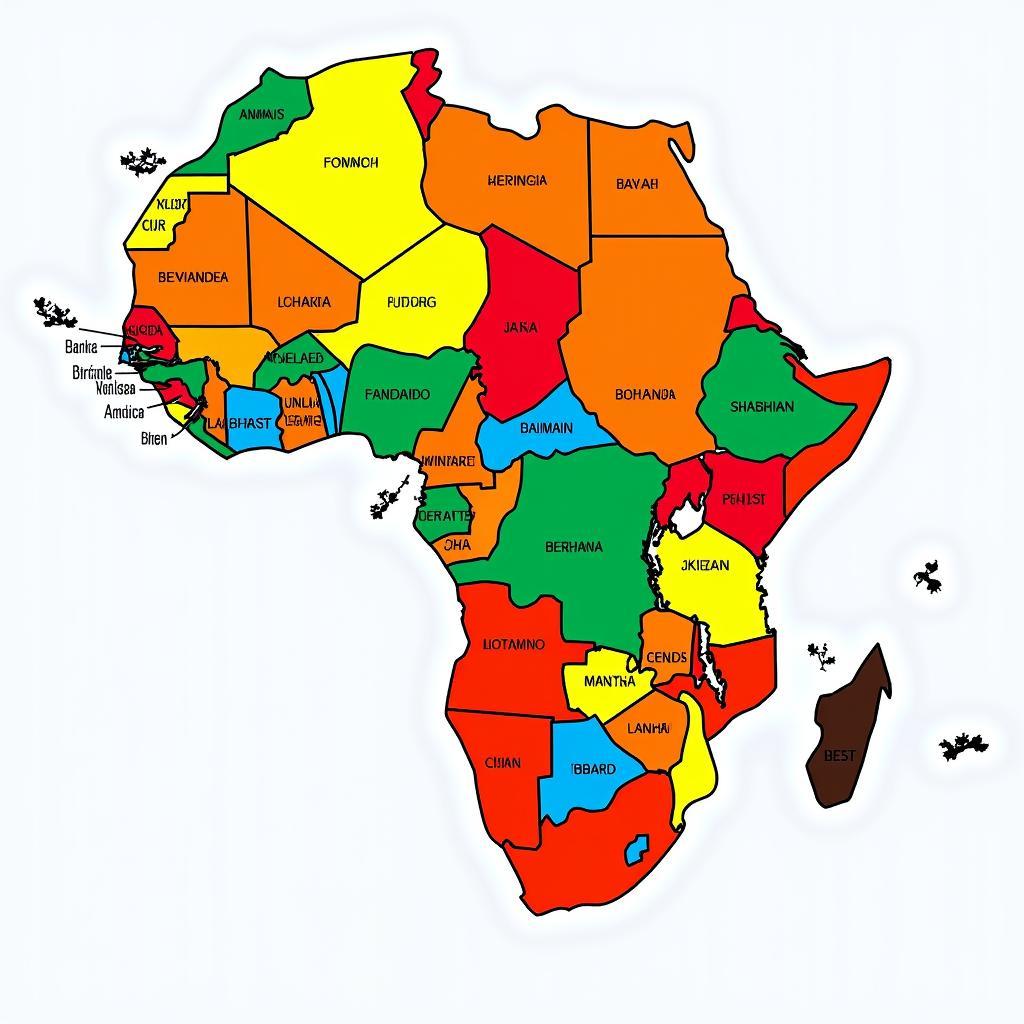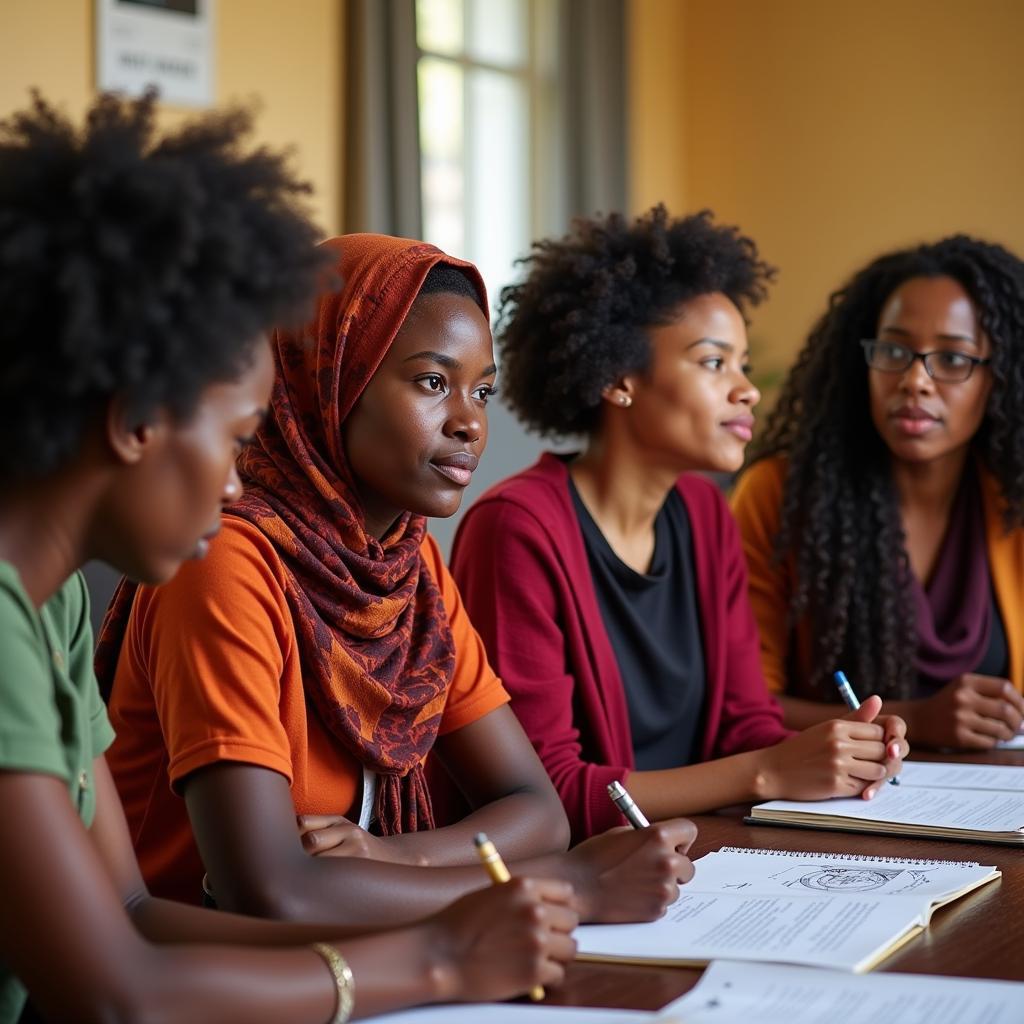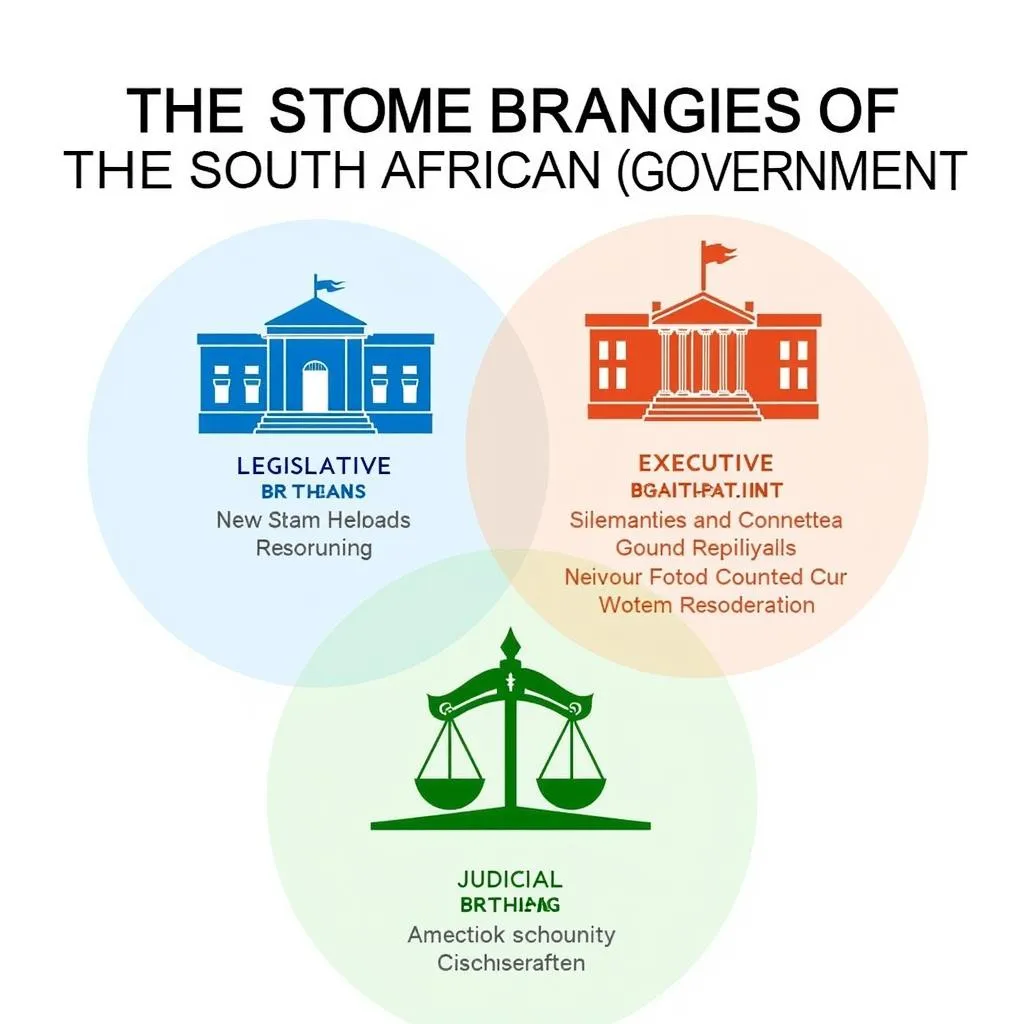African Attire for Men: A Journey Through Style and Culture
African Attire For Men is a vibrant tapestry of tradition, culture, and evolving trends. From the flowing robes of the desert to the intricate patterns of the West African coast, men’s clothing across the continent reflects a rich history and diverse influences. This article delves into the fascinating world of African men’s fashion, exploring its diverse forms, meanings, and contemporary adaptations. Check out some of the African inspired clothing mens trending today.
Exploring the Diversity of African Attire for Men
African men’s clothing is far from monolithic. Each region, country, and even tribe boasts its unique styles and traditions. The materials, colors, and designs often reflect the local environment, cultural beliefs, and social status. For example, the brightly colored kente cloth of Ghana, woven with intricate patterns, speaks to a rich heritage of craftsmanship and storytelling. Further south, the Zulu men of South Africa embrace animal hides and feathers in their ceremonial attire, showcasing a deep connection to nature and ancestral spirits.
The use of specific colors and patterns often holds symbolic meaning. In some cultures, certain colors are reserved for royalty or religious leaders, while others may represent specific virtues or qualities. The intricate embroidery and beadwork often seen in traditional African attire for men can also tell stories, depicting historical events, clan affiliations, or personal achievements.
North African Elegance: The Majesty of the Djellaba and Gandoura
In North Africa, the djellaba and gandoura are iconic garments for men. These loose-fitting robes, often made of wool or cotton, provide protection from the desert sun and wind. The djellaba, typically with a pointed hood, is a staple in Morocco, while the gandoura, often embellished with intricate embroidery, is popular in Algeria and Tunisia. These garments, though simple in design, exude a sense of timeless elegance and practicality.
West African Vibrancy: From Kente to Agbada
West African men’s attire is known for its vibrant colors and bold patterns. The kente cloth, originating from Ghana, is a prime example, showcasing intricate geometric designs woven in silk and cotton. The agbada, a flowing robe worn over matching trousers and shirt, is another popular choice, particularly for formal occasions. Its ample folds and elaborate embroidery convey a sense of grandeur and sophistication. You can find many options for african attire for women near me as well.
East African Traditions: The Maasai Shuka and Kikoi
East Africa presents a different aesthetic. The Maasai people are known for their distinctive shukas, brightly colored blankets draped around the body. The red color, often preferred by Maasai men, symbolizes bravery and strength. The kikoi, a versatile piece of cloth worn by men and women in Kenya, is another example of practical and stylish East African attire.
Southern African Styles: A Blend of Tradition and Modernity
Southern African men’s attire reflects a blend of indigenous traditions and contemporary influences. While some communities maintain traditional garments made from animal hides and adorned with feathers, Western-style clothing has also become widely adopted. The fusion of these styles often creates unique and eye-catching looks.
African Attire for Men in the Modern World
Today, African attire for men is experiencing a renaissance, both on the continent and globally. Designers are reimagining traditional styles, incorporating contemporary silhouettes and fabrics while preserving the rich cultural heritage. From runway shows to everyday wear, African men’s fashion is making a statement, celebrating its roots while embracing innovation. For a broader perspective on traditional African attire, explore more about african zulu women.
Conclusion
African attire for men is a vibrant expression of culture and identity. From the intricate patterns of kente cloth to the flowing elegance of the djellaba, each garment tells a story. As African fashion continues to evolve, it continues to captivate and inspire, showcasing the continent’s rich heritage and creative spirit. Choosing african attire for men offers a stylish way to connect with a diverse and fascinating cultural heritage.
FAQ
- What is the most common African attire for men? There isn’t a single “most common” attire, as styles vary greatly across regions. However, garments like the dashiki, agbada, and kente are widely recognized.
- Where can I purchase authentic African attire for men? You can find authentic pieces online, at specialty stores, and during cultural events.
- What is the significance of colors in African men’s clothing? Colors often hold symbolic meaning, representing status, virtues, or spiritual beliefs.
- How can I incorporate African attire into my everyday wardrobe? Start with accessories like a patterned scarf or beaded bracelet, or incorporate a dashiki into your casual wear.
- Are there specific occasions where African attire is traditionally worn? Yes, certain garments are reserved for weddings, funerals, festivals, and other important ceremonies.
- Can non-Africans wear African attire? Absolutely! Appreciation and respect for the culture are key.
- What is the difference between a dashiki and an agbada? A dashiki is a loose-fitting, often colorful shirt, while an agbada is a flowing robe worn over matching trousers and shirt.
Need More Help?
For any questions regarding African attire, feel free to explore our other articles, such as “african jungle men wearing” and “african bridal makeup products”.
Contact us for assistance:
Phone: +255768904061
Email: kaka.mag@gmail.com
Address: Mbarali DC Mawindi, Kangaga, Tanzania. We have a 24/7 customer service team.




